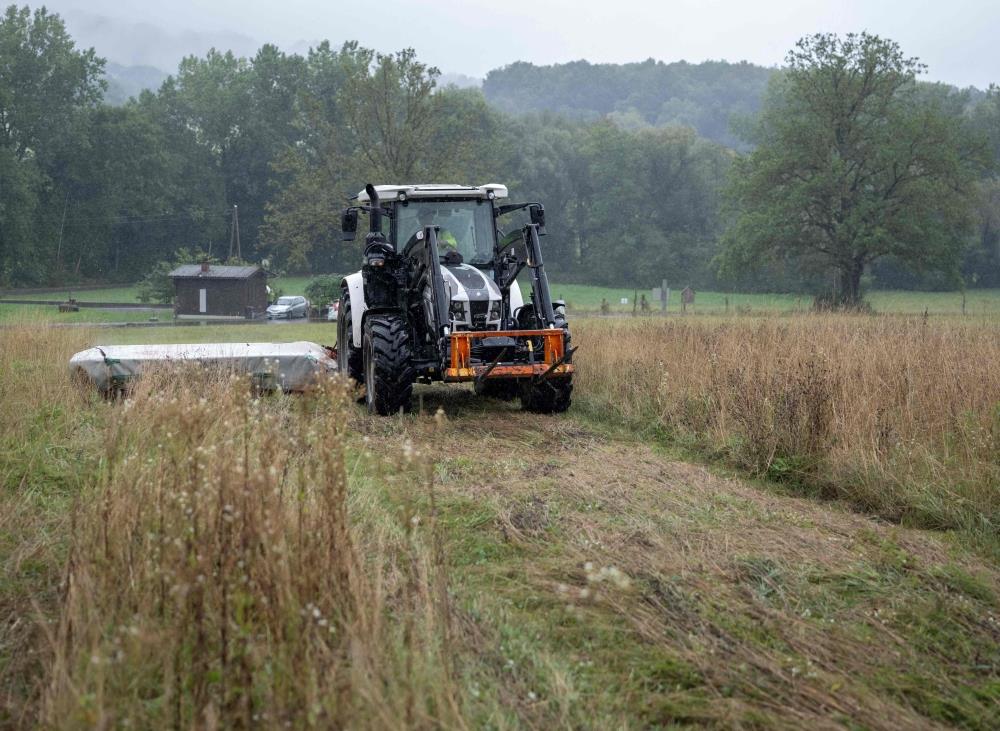How Mowing Less Lets Flowers Bloom Along Austria's 'Green Belt'
Sankt-Anna am Aigen, Austria: On a meadow in southeastern Austria near the border with Slovenia, Josef Hadler is working his tractor to mow several acres of land in a bid to better preserve the plot's biodiversity.
"Yesterday, a buzzard followed me at a distance of only five metres," the cattle farmer told AFP in the municipality of Sankt Anna am Aigen in the Styria province.
Thanks to Hadler's efforts for the local nature conservation association, endemic species of flora and fauna that have disappeared elsewhere have been able to survive on the 15 hectares (37 acres) of protected land he manages.
Located where the Iron Curtain once separated Austria from the former Yugoslavia, the fields near the Slovenian border are rich in biodiversity, precisely because the area used to be a no-go zone during the Cold War.
It is also part of the wider "European Green Belt" along the former Iron Curtain, a corridor of interconnected wildlife havens that stretches 12,500 kilometres (just over 7,700 miles) from Norway to Turkey.
"No one would dare to build their house right on the border (with Slovenia), which therefore remained green," explained Johannes Gepp, president of the local environmental protection organisation Naturschutzbund, which buys up plots of land from farmers.
Hadler mows the meadow only once or twice a year. The former owner, who had cultivated maize there, willingly sold the dry land 15 years ago to acquire another plot offering a better yield.
"We've gone from a monoculture to 70 to 80 species per 100 square metres" by eliminating fertilisers and reducing the mowing frequency, said Naturschutzbund's managing director Markus Ehrenpaar.
Hadler usually mows his fields five times a year for silage bales and hay to feed his livestock.
But he observed that mowing more frequently prevented flowers from growing, while mowing less often allowed many native species to flourish or even return.
Among them are the great burnet -- the only plant on which two different species of butterfly feed exclusively -- or the venomous nursery web spider.
Maintaining the fields is essential, as it prevents the proliferation of grasses to the detriment of wild flowers.
'Wonderful natural gems'
Hadler receives compensation for his work and can harvest the hay, which he uses as litter for his livestock.
According to Andrea Pock, the mayor of Sankt Anna am Aigen, the "wonderful natural gems" also have an educational value for biology lessons.
"A form of gentle tourism has developed," the 46-year-old mayor said, adding that "many people come to see the flowers and observe the insects".
Signs nearby recount the dark past of the fortified and mined border, which once sought to deter people from behind the Iron Curtain to cross into the West.
In the present, crossing points that allow for genetic mixing of plants have been created to ensure the long-term survival of such dense and diverse areas.
The effort costs millions of euros each year as "land is very expensive," said Gepp.
The region, the government and the European Union have all contributed financially to this costly revival.
And the stakes are high: Austria is home to 1,300 kilometres of the "Central European Green Belt", which it shares with the Czech Republic, Slovakia, Hungary and Slovenia.
But at present, only a third of it is protected environmentally.

Legal Disclaimer:
MENAFN provides the
information “as is” without warranty of any kind. We do not accept
any responsibility or liability for the accuracy, content, images,
videos, licenses, completeness, legality, or reliability of the information
contained in this article. If you have any complaints or copyright
issues related to this article, kindly contact the provider above.
Most popular stories
Market Research

- Nutritional Bar Market Size To Expand At A CAGR Of 3.5% During 2025-2033
- North America Perms And Relaxants Market Size, Share And Growth Report 2025-2033
- Primexbt Wins Global Forex Award For Best Multi-Asset Trading Platform
- Smart Indoor Gardens Market Growth: Size, Trends, And Forecast 20252033
- Excellion Finance Scales Market-Neutral Defi Strategies With Fordefi's MPC Wallet
- Japan Green Hydrogen Market Size To Reach USD 734 Million By 2033 CAGR Of 27.00%






















Comments
No comment